Interior designing is the art and science of creating stunning interior settings and décor using multiple elements of indoor space. An interior designer has to ensure that all the elements complement each other to create an aesthetically pleasing and efficient space. Interior designing can be done to a living space or a workspace or a public place, the designing elements and their coordination varies from place to place.
It is of the utmost importance that all the elements of the design complement each other while serving the purpose of the space. In this article we are going to look at the importance of lighting in interior designing.
Often while thinking about interior designing, our mind wanders off to gorgeous pieces of furniture, paintings, lamps, coffee tables, wall colors, decorative pieces, etc. They all are very important in their element but what often remains ignored is the topic of proper lighting. It is something that is assumed to be of lesser importance that can be adjusted later on. This is an entirely wrong and ill-informed process while redecorating your space.
You must keep the lighting plans parallel to other elements of the design. Fusing lights afterward might look like an easier choice but it won’t fare well if the whole setup suddenly becomes looking too dark or too bright.

Source: Freepik
So, why lighting in interior designing is so important?
Proper lighting ensures that the area under scrutiny suits the mood, purpose, and needs of the people. With proper lighting spaced throughout your space, you can ensure that your furniture and accessories get proper attention. You can opt for state of art paintings but without proper lighting, they all are going to remain hidden beneath the shadowy realm of Thanatos. If you are feeling confused and baffled, worry not, just keep reading. Here is a solution for all your confusion regarding lighting in interior designing.
So first of all, let’s focus on the importance of lighting in interior designing. Here’s a look at the importance of proper lighting in any interior space.
Impacts the mood of the room:
The use of proper lighting can ensure a change in the mood of the space. If you are planning to keep the mood of the room to sharp and attentive, you should choose high brightness and comfortable light fixtures which indicate a working atmosphere. This type of setting is mostly used in offices and hospitals. They give out a sense of formality and productivity to the people. The lighting of a place forms the first impression of that place upon the conscience of a person and it forms a huge part of their opinion of a place.
If you want people to get cozy in a space, you should use lights with fewer glares and more softness to them. You can use multiple light sources with less brightness to ensure that the space is well lit without being too harsh upon the eyes. You should opt for white light LEDs instead of high brightness fluorescent ones.

Source: Pexel.
This impact of light on our moods should be kept in mind while designing the interior. Warm light in the hallway in the evening may cheer up the guests whereas a bright LED might give a shock to their eyes. We need to provide them enough space to transition from dark to light and light to dark when in the daytime.
The functionality of the lights:
One of the basic requirements of lighting is for functionality purposes i.e. providing enough light to maneuver around the space. The lighting designs in interior designing should accommodate this purpose. Everyone has their own choices and preferences and most of the time their personality can get expressed through the kind of lighting they choose to decorate their spaces with.
While designing the interior space, a lot of factors along with the relevance of the requirement of the light should be kept in mind. It is difficult for natural or general lights to reach all the places, so one should always keep in mind the need for special lighting designs at specific places. For example, the normal room light won’t be enough to light up the cupboard or cabinets, so motion lights or other light settings should be considered while designing the space.
It is a very important use of lighting designing in interior designing.
Decorative uses:
Apart from the functionality, lights also serve as a decoration in themselves. We can use a combination of wall mount lamps, chandeliers, hanging lights, light pendants while decorating the space. In order to create the artistic effect in the space, we can use layered lighting i.e. lighting from several sources which will act as a decoration in itself.
Adds dimensions to the room:
Setting up lights at proper distance and angles can ensure a change in the ways your eyes might perceive the room. A cunning setting around can make a small space look bigger and easier to breathe in whereas you can use lights to turn a huge and bare hall into something inviting and personal.
If you have a small hallway, you can simply use vertical lights on the walls to ensure that it feels more welcoming and less cramped. You can hang a chandelier or a light pendant in the center of the hallway to ensure proper illumination while giving out a cozy and accommodating feel to the people.
Leads the eyes:
Well, light is a very important factor in your interior designing checklist. It will impact not only the visibility of your space but would help you in forming a proper path for eyes to focus on. When you enter a room or space, the first thing that you notice is the light setting. It guides your eyes and directs where to focus them.
You can use architectural lighting to create interesting points of focus within the space. You can use brightness and other light sources to make the focused object stand out. You can also combine decorative and functional lights to create a specific effect or focus on a certain area while maintaining the purpose of the lighting in that area.
You can use accent light to focus on a particular object and make sure that the surrounding stays a bit dim. This is sure to attract the attention of the eyes and make that object the center of the space, even if it is a painting mounted on the wall. The same remains true if you want to divert attention.
Impact of lights on health:
Several pieces of research have concluded that light settings of an interior space impact the circadian rhythms of our body; thus impacting productivity and health too. Natural light is very important for everyone and our productivity increases when we are working in natural light. So while incorporating lighting in our plans, we should try to imitate natural lighting in the workspaces and those parts of our home where most of our daytime is spent. This will not only maintain the circadian clock of our body but also ensure a better mood.
The same should be kept in mind while designing the bedroom or resting space in the interior. The natural light may act as a hindrance to the resting and sleeping needs of our body. So instead of using bright and natural lighting in the bedroom, we should opt for softer and dimmer lights with shades to prevent disturbances in the circadian rhythms of our bodies.
Not only the circadian rhythms, but the light mimicking the daylight also encourages a good mood in people. Most of the malls and shopping spaces are brightly lit because this helps them in increasing their sales when compared to dark lighting. Thus it impacts the mood of the people in the surrounding.
Create the surrounding you want to:
Using correct lighting around yourself, you can create the ambiance you want to. It is dependent on the type of surrounding environment that you have in mind. For example, if you are aiming for a professional environment with minimum personal touches, then you can go for bright light such as in offices, and if you want to create an ambiance of comfort and relaxation you would choose cozy and warm lights with a bit dimmed environment such as in restaurants.

Source: Pexels
Types of Lighting in Interior Designing:
So now that we are aware of the importance of lighting in interior designing, we can focus on the types of lighting that we can use in interior designing. Often we find ourselves depending on just one or a maximum of two sources of lights while decorating our homes. What we ignore is that each need requires a specific type of light to produce the required effect. Interior lightings can be broadly classified into the following categories:
- Accent Lighting
- Ambient Lighting
- Task Lighting
Accent Lighting:
Accent lighting is the lights that are used to highlight any particular point of interest or area or object to awaken any specific interest in the viewers. It uses three times the surrounding light on the object or area that is supposed to be in the focus. A lot of the time this kind of lighting is used to highlight a certain decorative piece in the space and to attract the eyes towards it without being too obvious. Apart from this, they can also be used to make the space feel larger than it is.
Track Lights, Slimline bar and under cabinet, Tape and extrusion, Directional recessed fixture or downlight, wall-mounted fixture are some fixtures that can be used for accent lighting.

Source: Pexels
Ambient lighting:
Ambient Lighting refers to those lighting which are installed with the purpose to light up the whole space in its entirety. Good ambient lighting is which illuminates the whole space properly. Other lights can be used to further decorate the room or add layers of lights but these remain as the overall lighting source of the space. Most of the time it is installed in the center of the space to ensure it reaches all the areas and lights up as much space as possible.
If just one source is not enough, then we can install multiple fixtures to ensure proper lighting. The general direction of these lights is from the ceiling towards the floor.
Chandeliers, Ceiling-mounted fixtures, wall-mounted fixtures, LED downlights, track lights, floor lamps, are some examples of ambient lighting fixtures that can be used to illuminate a space.
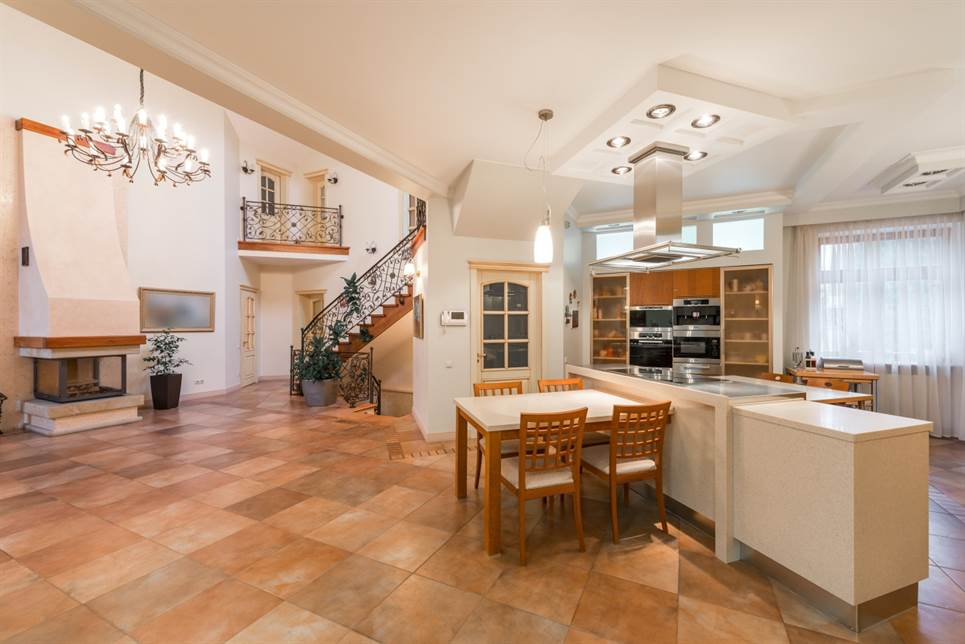
Source: Pexels
Task lighting:
Task lighting means those light fixtures that are installed with certain specific purposes and use. These are used while a person is involved in a certain activity such as reading, studying, cooking, exploring the cabinets, grooming, make-up, or any other specific activity that requires light in a specific angle or direction for proper utilization.
They are generally short ranged, bright lights that are positioned such that it supports the activity. They are usually independent of the ambient lighting and accent lighting, only used while a person is involved in the specific task that requires it.
They are generally soft lights that don’t cause many shadows but bright enough to enable proper illumination. Directional gimbal recessed fixture, desk lamp or portable lamp, tape or extrusion, pendant lighting, slimline and under-cabinet lights are some fixtures that are used as task lighting.

Source: Pexels
Points to keep in mind while designing your space:
So now that we are aware of the relevance and types of lighting in interior designing, we can move towards some suggestions for rooms and spaces. Every space has its purpose and the lighting of the place enhances its utilization. Here are some suggestions to keep in mind while designing a space.
Use a combination of all types of lighting.
As mentioned above, the interior lighting can be ambient, accent, or task lighting. You should use a combination of these lights to achieve a proper balance of lighting. Leaning on a single type of lighting might lead to excessive shadows or dark corners which should be avoided.
If only the ambient lights are used, there won’t be a focal point for viewers to focus on plus the shadows would look bad for the decorative pieces. The lack of task lights will cause inconvenience in fulfilling several tasks and would ultimately lead to failure.

Source: Pexels
Instead of using just one huge bright source of light, you can mix up several ambient lights and accent lights. This will create a layered and artistic ambiance of lights adding a dimension and feeling of openness to the space.
Manage the natural lighting and room orientation.
Natural lighting has been proved useful and important for proper productivity and body clock. Thus the lighting in interior designing should be balanced such that in the daytime, the ambiance should not differ much from the natural daylight even if the space does not receive appropriate natural lighting.
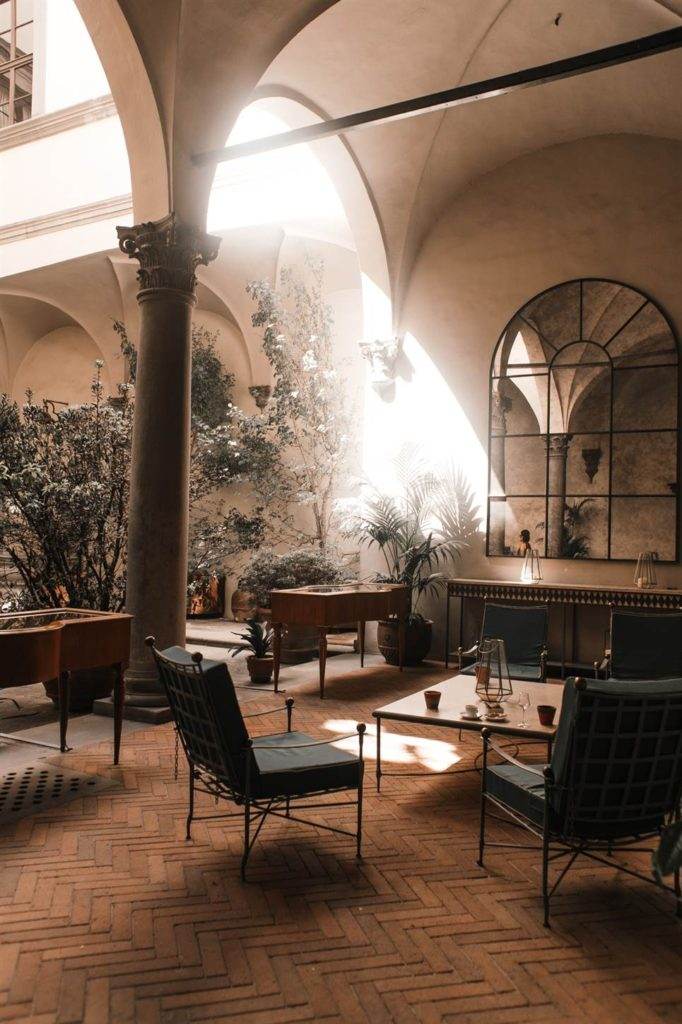
Source: Pexels
Especially in the living room space, accent lights should be focused on the decorative pieces and ambient lights should keep the space illuminated properly. You can use dimmers or shades in the evening to match the natural light outside. In the bedroom, the lights need not be always bright or daylight-like because it is a resting space, and a warm comfy light setting would be more suitable.
Brighten-up kitchen space.
While planning indoor lighting for the kitchen area, you should focus on choosing bright lights. This is a working space and proper illumination is necessary. You should also use under cabinet lights or motion lighting to ensure proper lighting for certain tasks. You can use LED strip lighting for proper lights and a balanced ambiance inside and outside the cabinets.
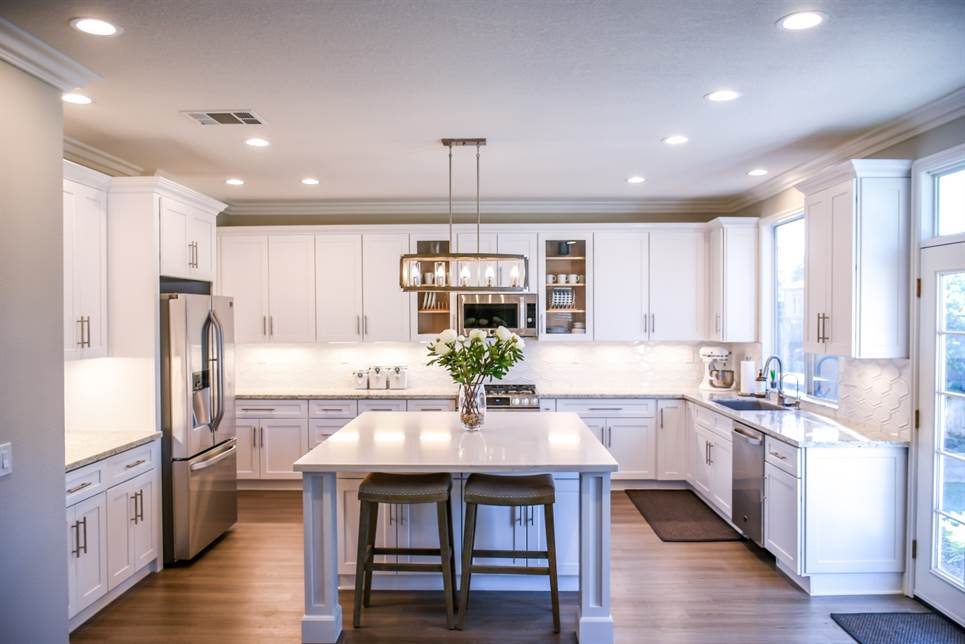
Source: Pexels
Ambiance can be used in a variety.
You can increase or decrease the brightness of the lights to change the ambiance of a space. You can use a light brightness regulator attached to the switchboards or use shades/dimmers to change the ambiance of a space. You can use the lights on full brightness during the daytime to match the daylight and place the dimmers as the evening approaches. This will give you variety and range to play with lights and brightness, and help you choose a proper ambiance suitable to the mood.
You need to be flexible with your light settings if you want to accommodate a range of experiences in your space. If you have multiple lights then you can also switch off or on particular lights to change the ambiance according to the requirement. A brighter setting for a party or a dimmer setting for a romantic couple date night, the choice is yours.
Focus on details.
While using multiple lights and lamps, you should be aware of the smaller details that might make it look unprofessional. While putting on the shades, make sure you do it properly so that the seams are not visible, because trust me eyes will find them easily despite the adornment all around. The lamps and wall hangings should be placed such that they don’t create too much shadow or shower some awkward lights upon the people under them.

Source: Pexels
Bathroom Biddings.
Most of us ignore bathroom lighting, considering it something that is not very necessary. Although it might not be visible to the guests upon entering, the bathroom lightings have their purposes. You don’t want shadows gathering on your face while you are grooming yourself in the bathroom. So make sure not to use too many ambient lights in the bathroom at the same place.
Instead, distribute the lightings properly to ensure that you get a layer of lights on your face while looking at the mirror. You can also use lamps or wall mounts at proper angles to ensure that you get proper illumination without shadows to obscure your view.
Corner illumination is important.
If placing a light in the corner seems like a waste of decorative space then you should think again. Corners of the spaces can be used to highlight that very particular piece without actually disturbing it and also adds to its charms. You can use floor lamps or overhead lamps to accentuate the corners and highlight the piece that might have gone unnoticed to the visiting eyes.
Be in reign while placing Overheads.
A brighter environment means more ambient lighting but you should be careful while using overhead lightings. If you use too much overhead lighting, then it might lead to shadows and might disrupt the ambiance. Instead go for a mixture of wall hangings, ceiling lights, lamps, and light pendants.
Thus we can say that lighting in interior design plays a very crucial role. Just like the pieces of furniture and decorative art pieces, it is also an element that should be kept in mind while planning the interior designing of the space. Bringing a small change in the lighting settings can lead to a drastic impact upon the ambiance, mood, view, and feelings of that space.
The design settings should be done according to the requirement of the space. You should choose the kind of lighting fixtures you want to decorate the space according to your requirement. You can go to a professional interior designer to get relevant lighting settings for your space for optimum utilization of every inch.
And that’s all folks. I hope now you are aware of the importance of lighting in interior decoration and would bring positive changes to your living spaces. If you need professional help consider contacting "Design Evolution Lab" for interior design consultation.
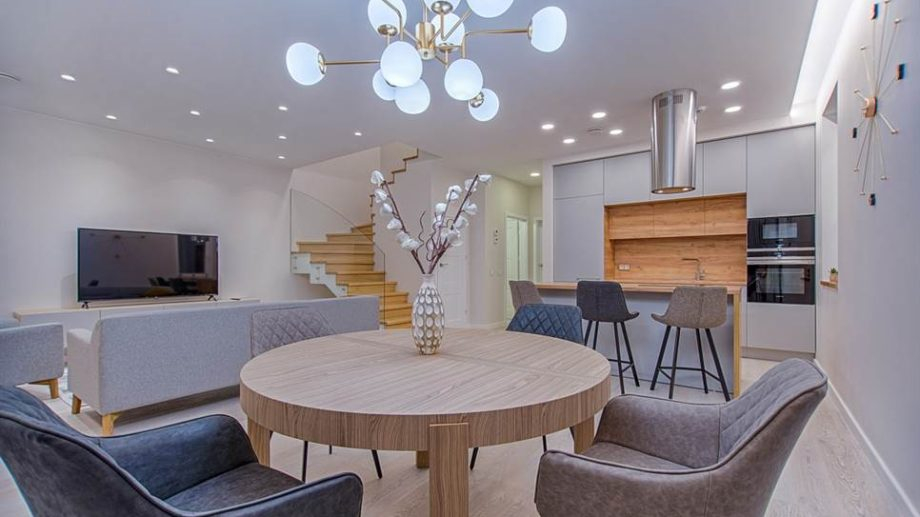
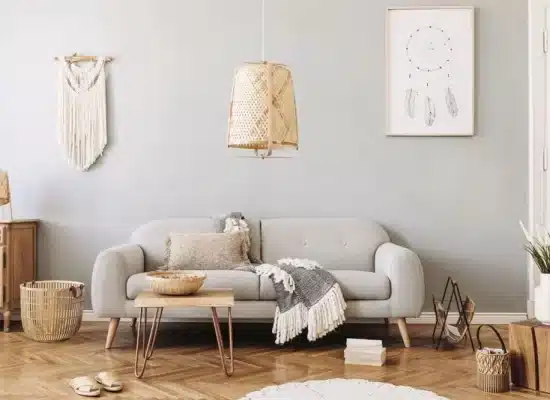
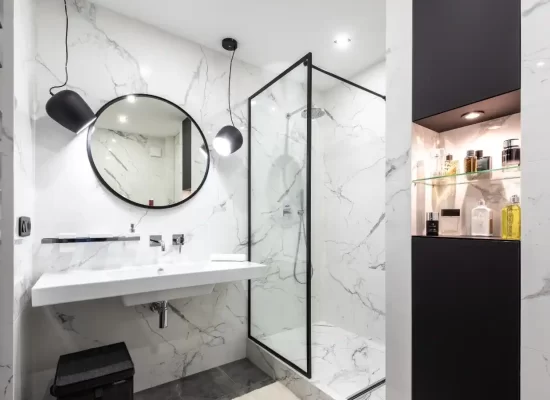
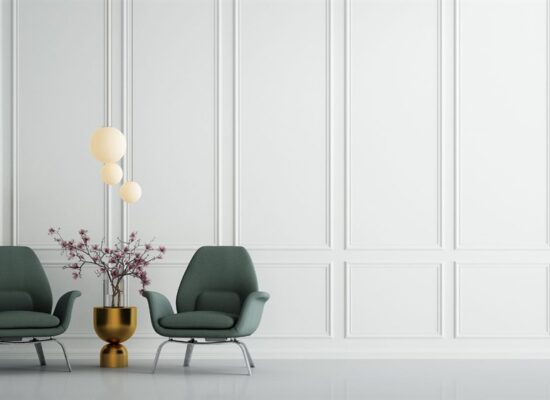
7 thoughts on “Importance of Lighting in Interior Designing”
Comments are closed.